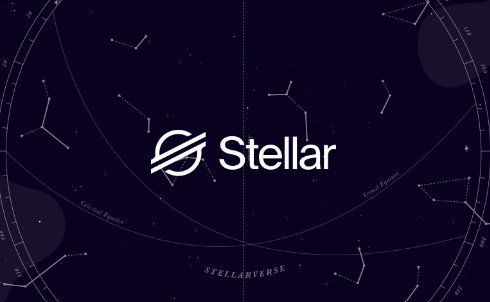Unraveling the Potential of Stellar (XLM) in the Cryptocurrency Landscape
In the ever-evolving world of cryptocurrencies, Stellar (XLM) has emerged as a significant player with a unique approach to blockchain technology. Established in 2014 by Jed McCaleb and Joyce Kim, Stellar aims to facilitate seamless cross-border transactions and bridge the gap between traditional finance and decentralized digital assets.

In the ever-evolving world of cryptocurrencies, Stellar (XLM) has emerged as a significant player with a unique approach to blockchain technology. Established in 2014 by Jed McCaleb and Joyce Kim, Stellar aims to facilitate seamless cross-border transactions and bridge the gap between traditional finance and decentralized digital assets. In this article, we'll delve into the intricacies of Stellar, exploring its features, use cases, and the potential impact it could have on the broader cryptocurrency landscape.
Understanding Stellar's Technology:
Stellar operates on an open-source, decentralized protocol that facilitates fast and low-cost cross-border transactions. Unlike many other blockchain platforms, Stellar does not rely on the energy-intensive proof-of-work consensus mechanism. Instead, it employs the Federated Byzantine Agreement (FBA), a consensus algorithm that allows for faster transaction confirmation.
The Stellar network consists of nodes that communicate and validate transactions through a process known as quorum slices. This unique approach results in quicker transaction times and lower fees compared to traditional financial systems and other blockchain networks like Bitcoin or Ethereum.
Use Cases and Applications:
Cross-Border Payments:
- One of Stellar's primary use cases is facilitating cross-border payments. Traditional international money transfers can be time-consuming and costly due to intermediaries and currency conversion fees. Stellar's blockchain enables near-instantaneous cross-border transactions with minimal fees, making it an attractive solution for individuals and businesses looking to streamline their global financial transactions.
Tokenization of Assets:
- Stellar's platform supports the creation and issuance of tokens, allowing users to tokenize various assets, including fiat currencies, commodities, and even real estate. This feature opens the door to a wide range of possibilities, such as creating stablecoins pegged to national currencies or representing ownership of physical assets through blockchain tokens.
Microtransactions:
- Stellar's low transaction fees and fast confirmation times make it well-suited for microtransactions. Content creators, developers, and service providers can leverage Stellar to implement new business models, such as pay-per-use services or micro-donations. This can be particularly beneficial in industries like content creation, gaming, and social media.
Partnerships and Collaborations:
Stellar has forged strategic partnerships with various entities, including financial institutions, technology companies, and non-profit organizations. One notable collaboration is with IBM through their joint venture, IBM World Wire. This partnership aims to revolutionize cross-border payments by leveraging Stellar's technology to enable faster and more cost-effective transactions for financial institutions.
Another noteworthy collaboration is with Ukraine's Ministry of Digital Transformation. Stellar is working with the Ukrainian government to develop a framework for a central bank digital currency (CBDC) and explore opportunities to enhance the country's financial infrastructure.
Challenges and Competition:
While Stellar has made significant strides, it faces competition from other blockchain platforms and traditional financial systems. Ripple (XRP) is one such competitor that focuses on cross-border payments, aiming to provide financial institutions with a more efficient and cost-effective alternative to traditional correspondent banking.
Moreover, scalability remains a challenge for many blockchain projects, including Stellar. As adoption grows, maintaining transaction speed and low fees becomes crucial. Solutions like the Lightning Network, which is designed to enhance the scalability of blockchain networks, are being explored by various projects, including Stellar.
Regulatory Landscape:
The regulatory environment is a critical factor influencing the success of any cryptocurrency project. Stellar has taken steps to ensure compliance with regulations, working closely with governments and financial institutions. Its collaboration with Ukraine's Ministry of Digital Transformation demonstrates a proactive approach to engaging with regulators to foster a favorable regulatory environment.
However, regulatory challenges persist in various jurisdictions. Clarity on issues such as the classification of digital assets, taxation, and compliance requirements remains essential for the widespread adoption of cryptocurrencies like Stellar.
Conclusion:
Stellar (XLM) has positioned itself as a prominent player in the cryptocurrency space, offering a unique blend of fast and low-cost transactions with a focus on cross-border payments. Its partnerships, collaborations, and innovative features contribute to its growing influence in the financial industry.As the cryptocurrency landscape continues to evolve, Stellar's success will depend on its ability to address scalability challenges, navigate regulatory landscapes, and stay competitive in a field filled with dynamic and innovative projects. With its commitment to financial inclusion and efficient cross-border transactions, Stellar is poised to play a significant role in shaping the future of decentralized finance
What's Your Reaction?















